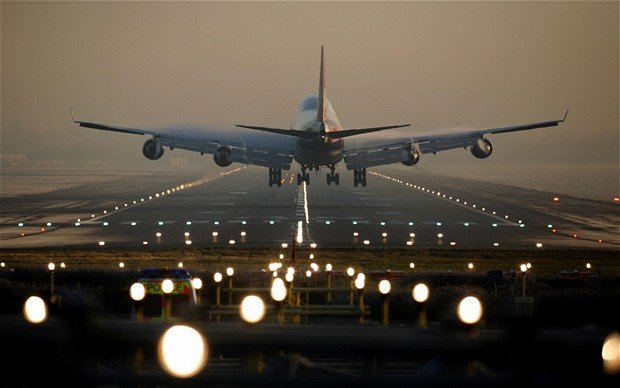Published
6 years agoon

Ghana has started raking in the benefits of its investments and the robust aviation navigation installations it has deployed over the years as part of measures to make the country the aviation hub in the West African sub-region.
Subsequently, the Kotoka International Airport (KIA), considered one of the safest airports on the continent, has begun receiving aircraft bound for other West African countries but which cannot land there due to the harmattan haze.
The aircraft diversions to Accra follows a consensus reached by aviation sector experts in West Africa that the KIA had better air navigation and instrument landing systems needed to guide aeroplanes down, even during intensified dusty dry winds.
The Corporate Communications Manager of the Ghana Civil Aviation Authority (GCAA), Mr Eric Mireku Amaning, told the Daily Graphic in Accra yesterday that, so far, about six West Africa-bound international flights, mostly en route to Nigeria, had been diverted to the KIA.
“The flights diverted to Ghana included British Airways (BA), Delta Airlines, Emirates Airlines, Air France, Qatar Airways and RwandAir. They were diverted from the Murtala Muhammed International Airport, Lagos, and the Nnamdi Azikiwe International Airport, Abuja, both in Nigeria, between February 10 and 12, this year,” he said.
Situation in the region
Since last Monday, the harmattan haze has crippled flight services in most countries in West Africa, with some of the airlines operating in the sub-region being either delayed or cancelling their flights.
Nigeria, the worst hit by the hazy atmosphere, has been diverting its international-bound flights to Ghana.
The development, which inconveniences both passengers and operating carriers, is not helped by the sub-optimal performance of instrument landing aids at airports in Nigeria.
The most affected areas are reportedly Lagos, Abuja and Port Harcourt, where the harmattan presence has been strong.
Navigational aids
Mr Amaning explained that flights bound for Nigeria were being diverted to Accra because Ghana had deployed better instrument landing systems and other navigational aids for aircraft take-off and landing.
“We have better instrument landing systems and other navigational aids, such as Doppler Very High Frequency Omnidirectional Radio Range, to help aircraft land in bad weather.
“In safety, Ghana prides itself as having one of the best safety records across the world, and it was no wonder that the International Civil Aviation Organisation scored the country 89.9 per cent in its Coordinated Validation Mission,” he said.
He observed that some of the aircraft involved in the diversion were currently at the KIA, awaiting improved visibility from Nigeria in order to depart.
Financial benefits
Asked whether the development had any negative impact on the KIA, he responded in the negative, and indicated that Ghana was rather benefiting from the current situation.
“We are currently benefiting immensely from the situation, as the airlines pay landing and overflight fees for the diversion. Because of the situation, most of the passengers have not been able to travel back to their respective countries and that is another cash in for Ghana,” he said.
On the local front, Mr Amaning observed that the poor visibility posed by the severe harmattan had no negative impact on local and international flights from Accra.
He added that the Ghana Meteorological Agency (GMA) had assured the GCAA that the weather was clear and so flights could operate.
“Although there is currently a hazy atmosphere, the GMA has assured us that the weather is okay for both domestic and international airlines to operate and so we have not cancelled any flight; we are only monitoring the situation closely,” he added.
Airport Meteo’s caution
For his part, the Officer in charge of the KIA Meteorological Office, Mr James Dusu, cautioned passengers and travellers to take precautions before embarking on their journeys, as the authority expected the severe harmattan being experienced currently to last until Sunday.
He said the change in the weather pattern was as a result of the dry and cool continental winds entering the country.
Weather report
Due to this, he said, the atmosphere was currently very dry and hazy, with hot afternoons and relatively cool night-time temperatures.
“The atmosphere will remain dry and hazy, with a drastic reduction in visibility values of less than one kilometre to a little above three kilometres to be observed.
“Relative humidity values are around 20 per cent over the northern part of the country, 20-30 per cent over the middle sector and 25-55 per cent over the coastal belt,” Mr Dusu said.
He added that passengers travelling by air should be aware that “we are in hazy atmosphere and should prepare when travelling across the sub-region”.
He said the situation would be assessed to see if the hazy conditions would persist in the coming week.
Source: graphic.com
